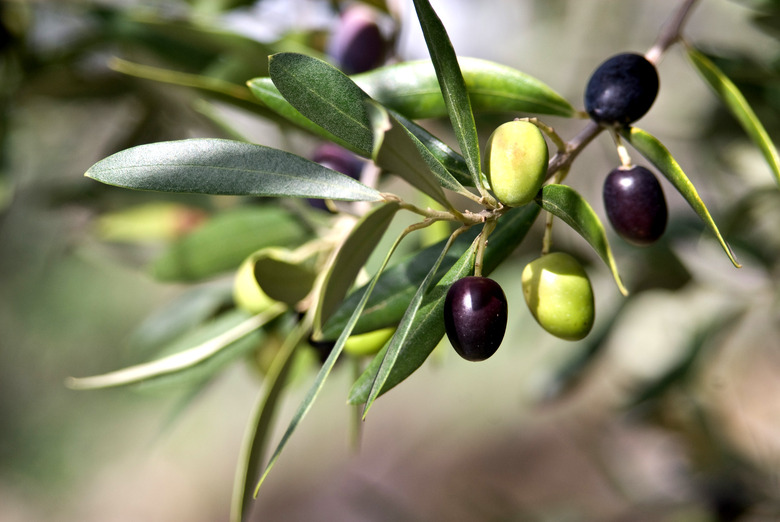How Fast Do Olive Trees Grow?
We may receive a commission on purchases made from links.
Olive trees are among the most venerable members of the plant kingdom, valued from ancient times for their fruit. These fruits have a rich history, from playing a role in ancient mythology, to the Biblical symbolism of an olive branch. They are a distinctive and beautiful addition to a garden or backyard, but if you want rapid growth, look elsewhere.
Tip
Olive trees are classified as slow-growing trees. They add less than 12 inches a year, sometimes quite a bit less.
Meet the European Olive Tree
Meet the European Olive Tree
If you associate only one tree with the Mediterranean coast, it would have to be the European olive tree (Olea europaea). These are the iconic trees of Spain, France, and Italy, and also appear in some parts of Africa. In the United States, they grow only in U.S. Department of Agriculture plant hardiness zones 9 or 10 through 11, which includes parts of the South and West. They will not thrive where the wintertime temperature fall below 15 degrees Fahrenheit. Many California growers raise olives but they produce less than 1 percent of the world's olives.
The European olive is an evergreen tree with a short, gnarled trunk, holding onto its hard, thick, glossy leaves all year round. The leaves are green above and white below. Olive trees flower in late spring with greenish flowers in panicles. The olive fruits appear when the blossoms fade, and they ripen at the end of the autumn. Olive fruits are green when they are young, but generally become a blackish-purple color when mature. There are varieties that remain green and other varieties that mature a copper-brown color. The shape, size, and flavor vary quite a bit as well.
Grow Olive Trees
Grow Olive Trees
European olive trees grow to between 10 and 40 feet tall. They are truly tough trees, tolerating heat and drought, and dry, windy conditions. For example, the wood resists rot and — if the tree canopy dies or is cut, a new trunk can grow up from the roots. And olive trees live a very long time. Botanists have documents that suggest that some in Europe are almost 1,000 years old.
Olive trees need sun to thrive, and a lot of it. Full sun is ideal, and the trees need at least six hours of direct, unfiltered sunlight each day. Soil is an important part of landscape considerations. The trees grow well in sandy soils and also prefer poor soil without any nitrogen added. Excess water is another problem. Too much water can make the trees vulnerable to root rot and can also cause blossoms to drop early.
When siting a tree, look out for potential risks posed by the roots. They can uproot foundations and damage sewer systems.
Understand an Olive's Growth Pattern
Understand an Olive's Growth Pattern
Olives are long-lived trees with durable wood and grow quite slowly. They are officially classified as slow growing, meaning that they grow 1 to12 inches a year. During its first years, a young olive tree can grow closer to the top of this range, but growth slows as it matures. Some say that you can get the tree to grow faster by pruning the tree while it is young to establish a strong, straight trunk. However, this may impact the ornamental value of the tree's natural, gnarly profile.
